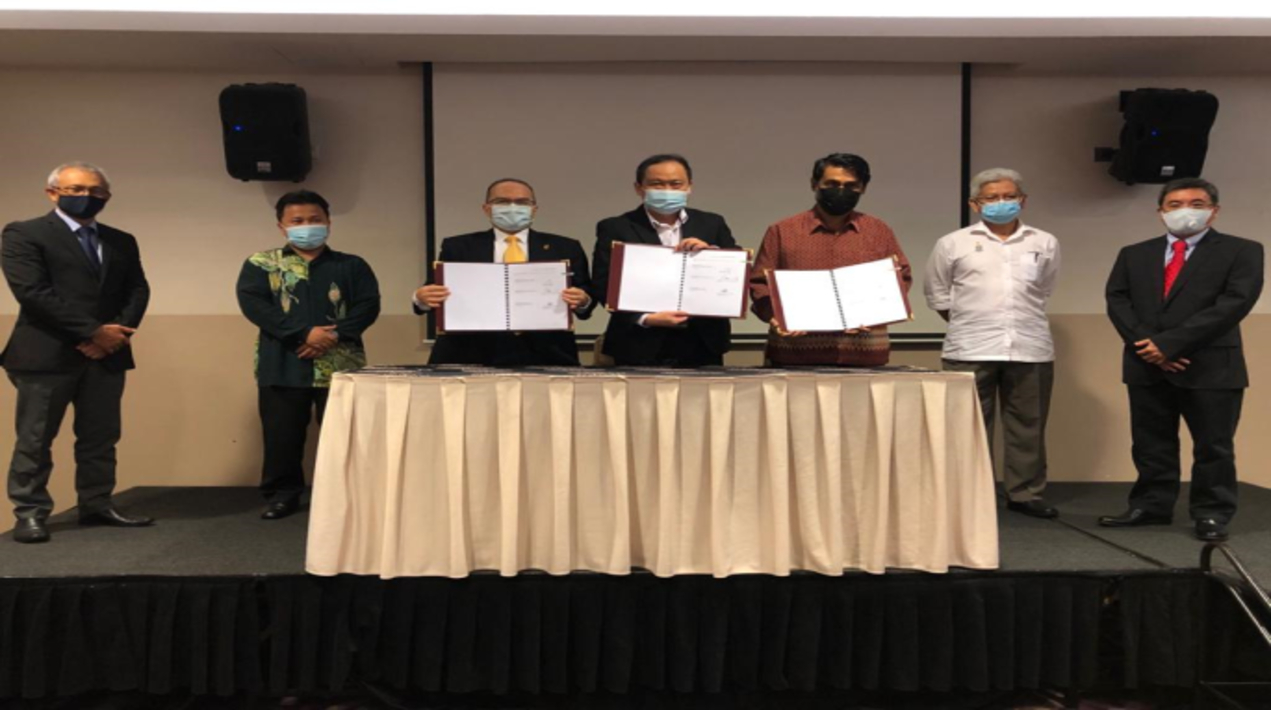
UKM Pakarunding Sdn. Bhd. (UKMP), Solar Energy Research Institute (SERI) and a Japan-based solar technology firm recently signed a Memorandum of Understanding (MoU) to undertake cooperation in the research and development involving solar energy technology that can be utilised by the public. Among the projects that are being carried out together is the Bertam Smart Energy City, which is a project that involves green development and energy saving in several buildings around Bertam Town, Penang.
The Director of SERI UKM stated that the MoU would pave the way for other collaborations and would be a new platform for students at UKM in the future. “We have high hopes that this cooperation will continue in the future, especially in developing the Bertam Smart Energy City project. It is an initial step towards Penang Smart City status as planned”, he said.
The University hopes that with the support of the Japanese solar tech firm, all projects that have been planned can be continued in line with the government’s recommendations that now allow business activities to run in accordance with the SOPs that have been set, the Professor said.
Through the collaboration, many projects will be carried out jointly by the three organisations. SERI and the solar tech firm also collaborated in conducting a study on Hybrid Solar PV and Heat Pump System at Kepala Batas Hospital, Penang. UKMP which is a subsidiary of Universiti Kebangsaan Malaysia (UKM will manage any collaboration projects in the future. While the collaborating firm is a leading solar panel manufacturer and certainly able to meet the needs of local and international markets.
Boosting renewable energy in Malaysia
According to a recent report, Malaysia is likely to continue to run annual tenders to help achieve its renewable generation target of 7 GW by 2025, given the competitive tariffs achieved in earlier solar auctions.
Malaysia set a 20% renewable energy target in 2018. At the end of 2018, renewables had a 2% share of the generation stack. The country now has 1 GW of renewable capacity in the pipeline. The total installed capacity at the end of 2019 was 33.9 GW, according to official data, and there have been no official updates for 2020 as yet.
Malaysia is expected to continue to run annual tenders to help achieve its goals – with the possibility of increasing the country’s target – given the competitive tariffs achieved in the solar auction of less than Malaysian ringgit 20/kWh ($4.85/kWh).
The tenders issued by the Sustainable Energy Development Authority (SEDA) since 2017 for solar, biogas, and small hydropower projects supported Malaysian development of renewable energy, in addition to providing financial incentives for boost such developments, said Joo Yeow Lee, associate director, power at IHS Markit in Singapore.
Solar facilities account for the largest number of Malaysian projects, according to a recently released report titled, “Green recovery opportunities in Southeast Asia, Japan, South Korea and Taiwan” by a UK-based multinational professional services network. A total of 2.327 GW of solar capacity has won approval in tenders in the past four years.
Solar to see seven-fold capacity jump in next decade
An American-British information provider estimates Malaysia’s installed solar capacity will see a seven-fold increase by 2030 from an estimated 1.4 GW to 1.5 GW at the end of 2020. The total installed capacity at the end of 2019 was about 1.2 GW, according to IHS Markit data.
By 2050, approximately 20% of the power generation in Malaysia will come from renewables, with solar PV contributing around 90% of that total, according to the firm’s forecasts. Malaysia’s installed solar capacity will see a 30-fold increase between 2019 and 2050, they reported.
The expansion of renewables in Malaysia can be attributed to several factors. Firstly, the Malaysian government has been consistent in implementing large-scale tenders; it has continued to modify schemes that support solar development, and more are expected.
A strong local supply chain for solar; a low resource potential for other renewable technologies; strong demand from multinational corporations with RE100 commitments (a global initiative that brings together the world’s most influential businesses committed to 100% renewable electricity) and operations in Malaysia; and the development of data centres requiring green energy will also all contribute to the expected increase in installed solar capacity, he said.
In addition, the heavy reliance on solar under the current national policy inhibits other technologies from stepping up to help meet the target, while wind development is likely to remain minimal due to Malaysia’s location near the equator where wind speeds are extremely low.
















